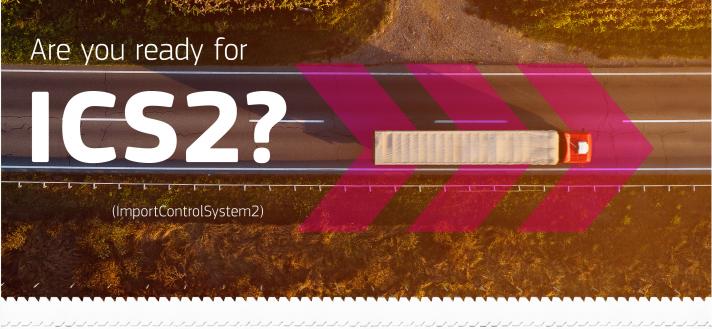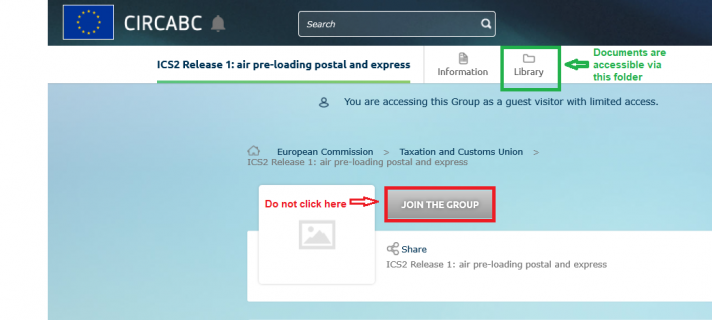All necessary technical documentation for the update of the EOs IT systems is found on CIRCABC, a collaborative platform, which offers an easy distribution and management of documents.
The ICS2 folders on CIRCABC are publicly available. Please click on the button ‘Library’ at the upper-right corner of the screen. Joining the interest group is not necessary in order to access the ICS2 documentation.
In 2005 and 2006 security aspects were introduced into the EU customs legislation (Regulation (EC) 648/2005, 1875/2006) in response to the 11 September terrorist attacks in the United States. The purpose of these measures went beyond addressing security threats and preventing terror attacks but also sought to improve the overall safety of the international goods supply chains in the new millennia. Thanks to these measures, EU customs authorities can fully ensure the
protection of EU borders and its citizens (Article 3 of the Union Customs Code) from illicit trade. Additionally, the measures seek to strike an appropriate balance between customs controls and legitimate trade.
The integral measures included:
- the requirement to submit electronic data prior to the arrival of goods in the EU (the so-called Entry Summary Declaration - ENS) in order to analyse and identify security and safety risks before goods arrive at the external borders;
- setting up an advance cargo information system (Import Control System – ICS);
- the introduction of the Authorised Economic Operator (AEO) programme;
- deployment of a common risk management framework with controls based on electronic risk analysis techniques;
- control focus on high-risk goods movements while identifying and facilitating cross-border movements of goods involving legitimate trade.
When the new regime first entered into force, new security threats emerged. The Transatlantic Aircraft Bomb plot in October 2010, where a shipment containing improvised explosive devices was found on-board of an airplane transiting the EU towards the United States, exposed certain structural weaknesses and gaps in the system.
Consequently, the EU promptly decided to review the ICS and the entire risk management framework, focusing on reinforcing the structure and becoming more responsive, efficient, effective and adaptable to new emerging threats.
In 2014 the European Council adopted the Commission Strategy and Action Plan for better Customs Risk Management, which provided the basis for additional legislative, IT and operational reforms.
The cornerstone of the reform in the field of protection of safety and security is a complete overhaul of the ICS transforming it into a new large-scale advance cargo information programme underpinned by the ICS2. It will be developed, deployed and operational between 2021 and 2025. It aims to further strengthen the “first line of defence” for customs.


